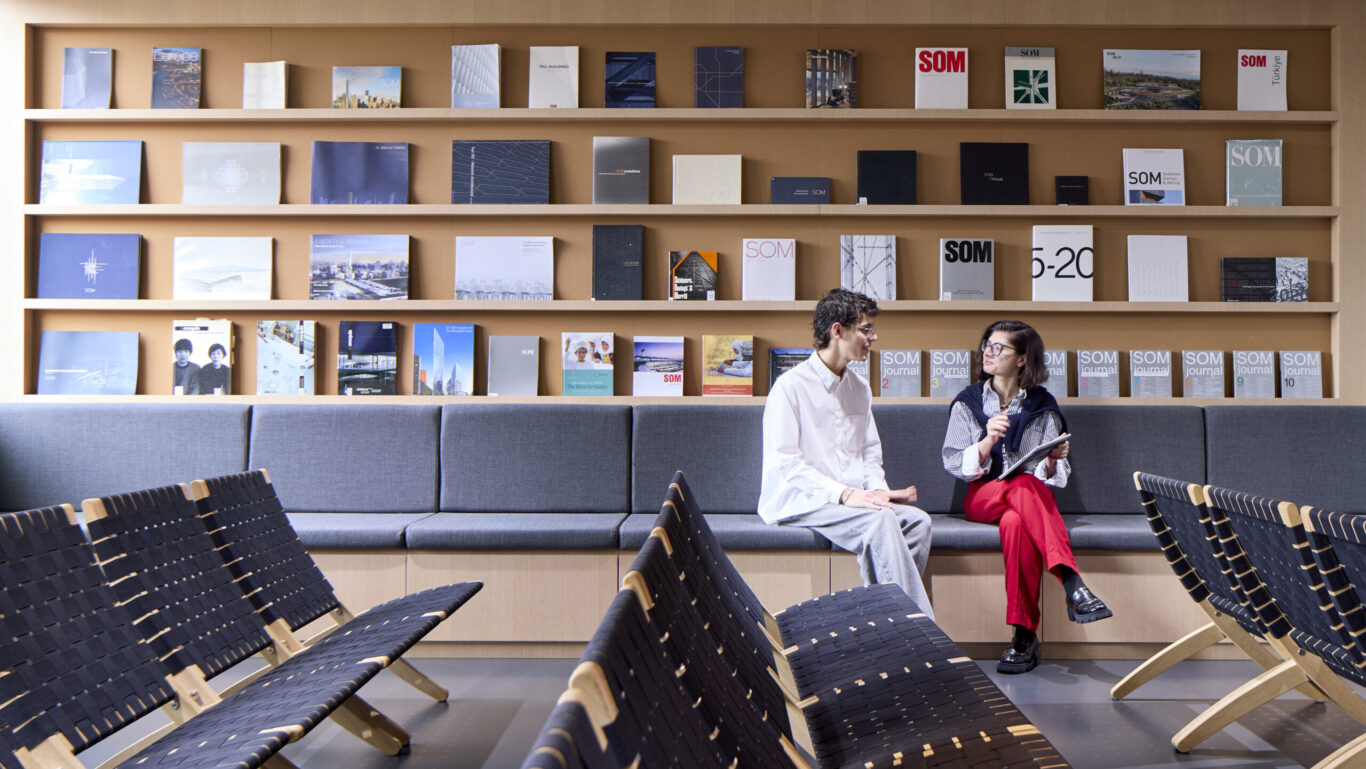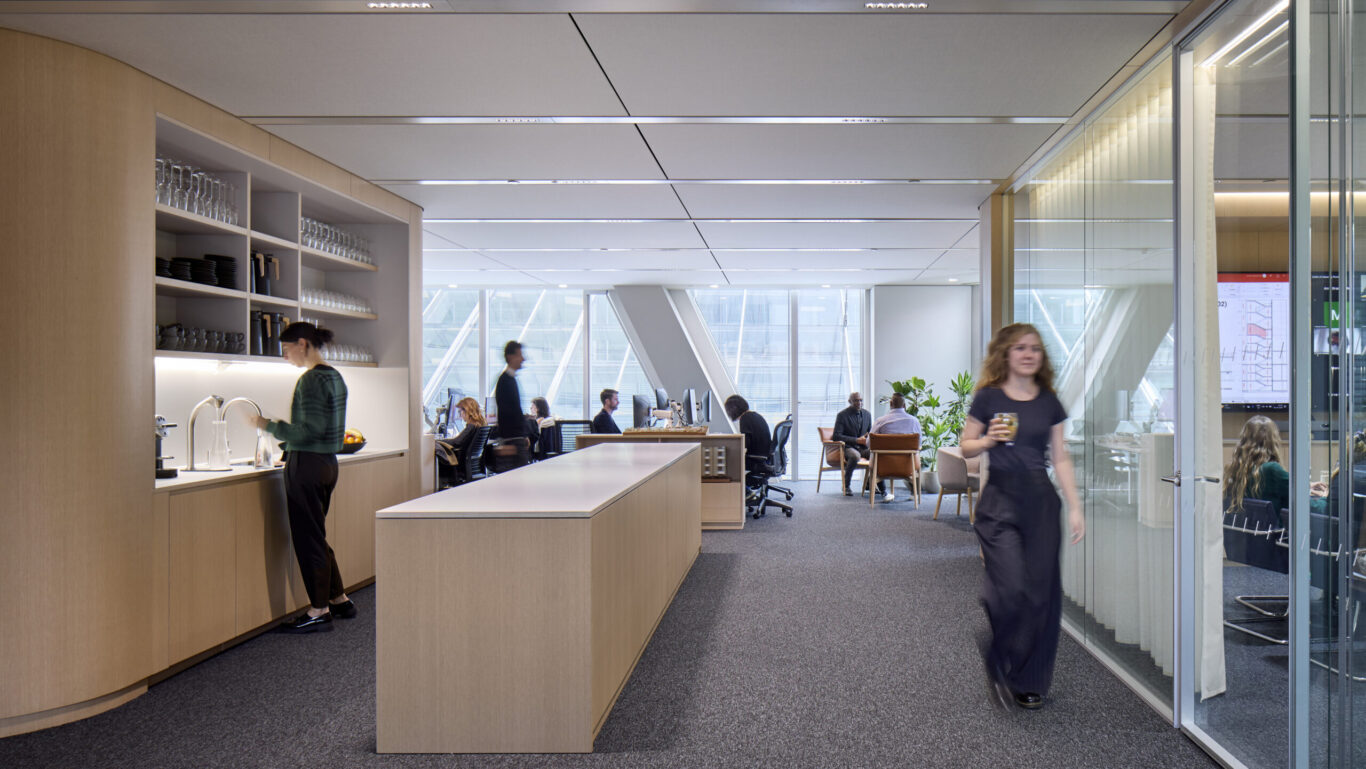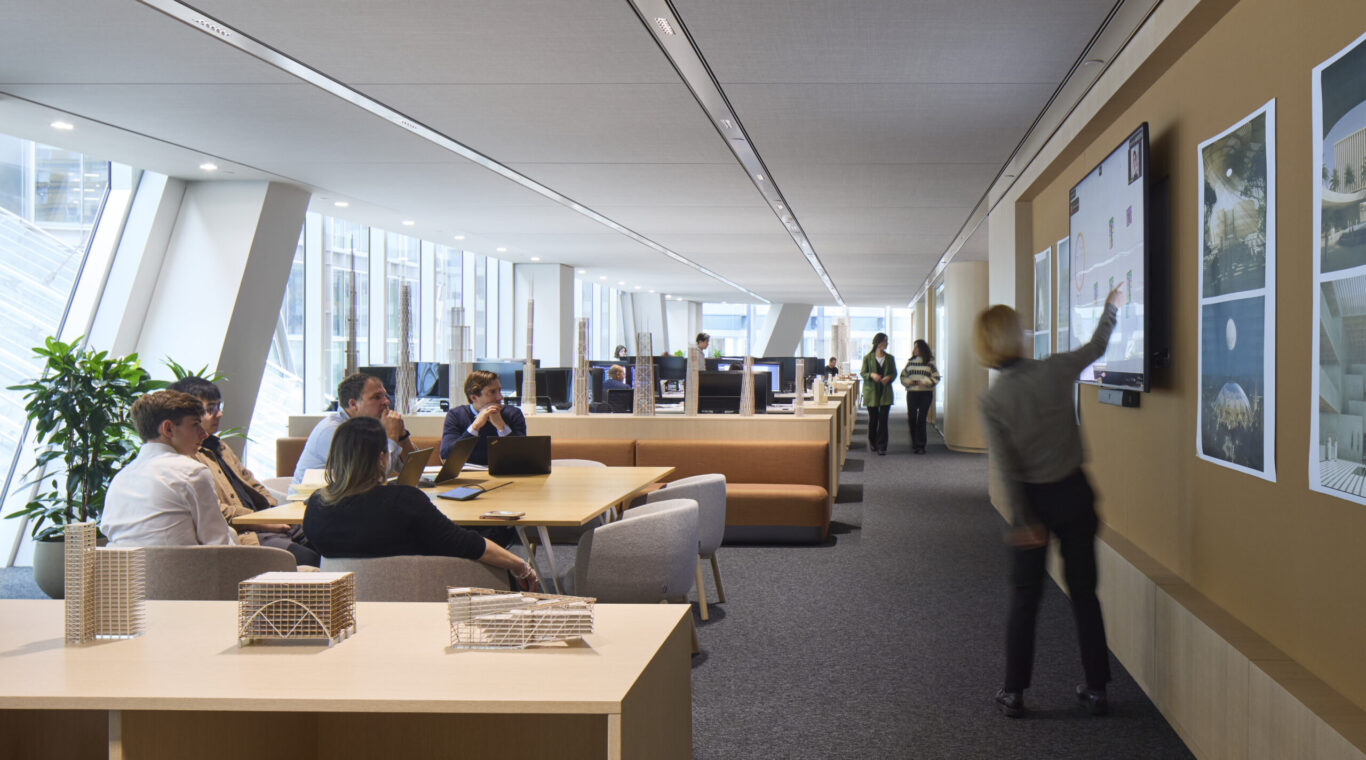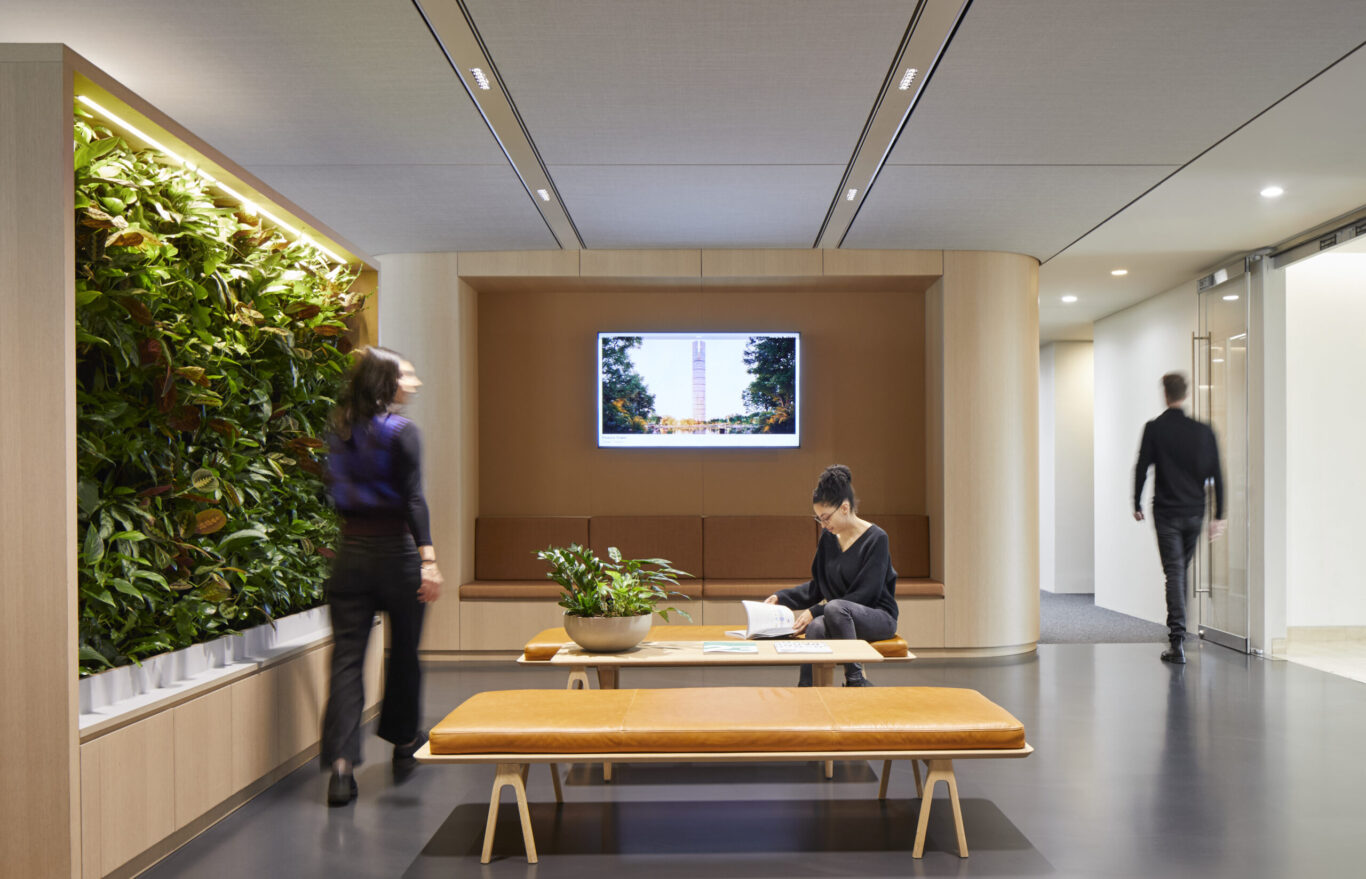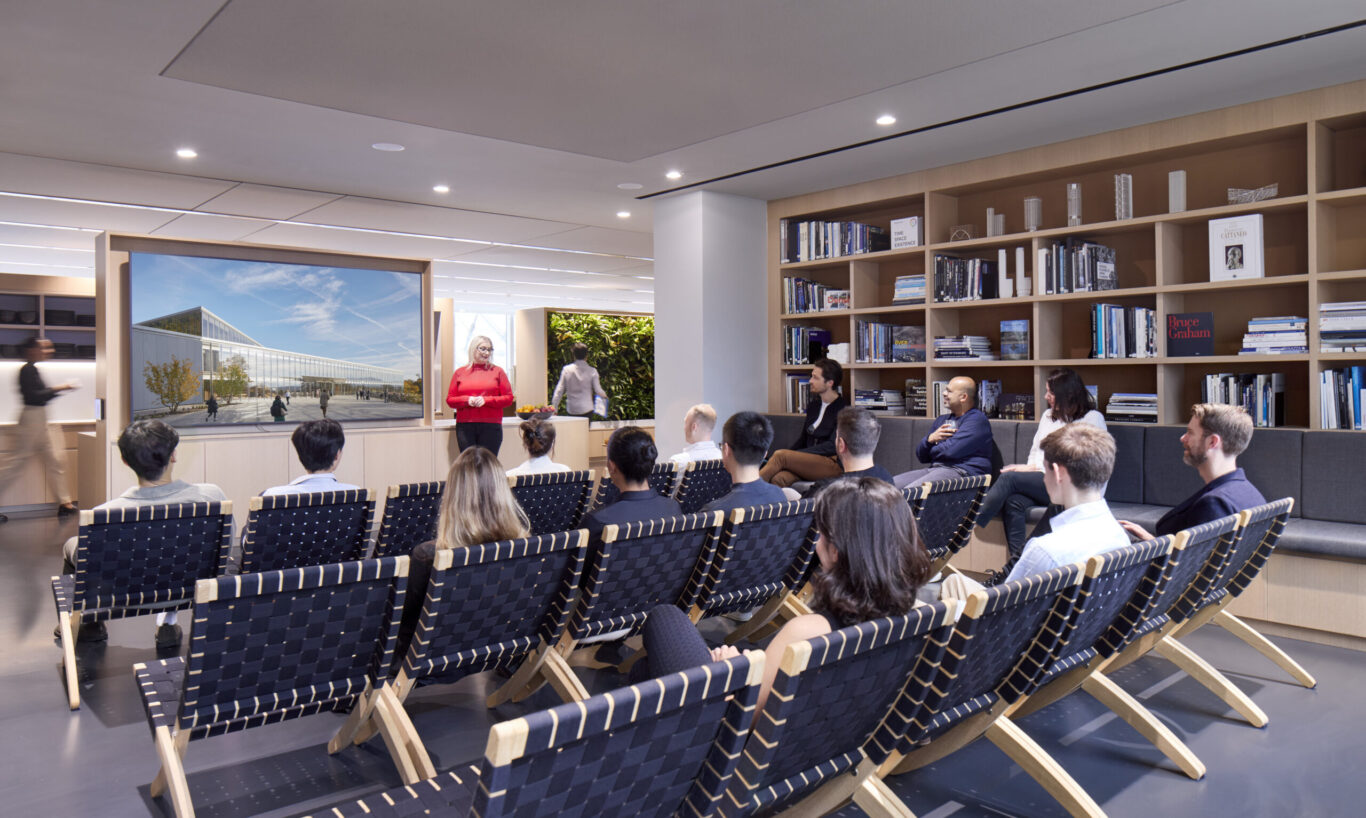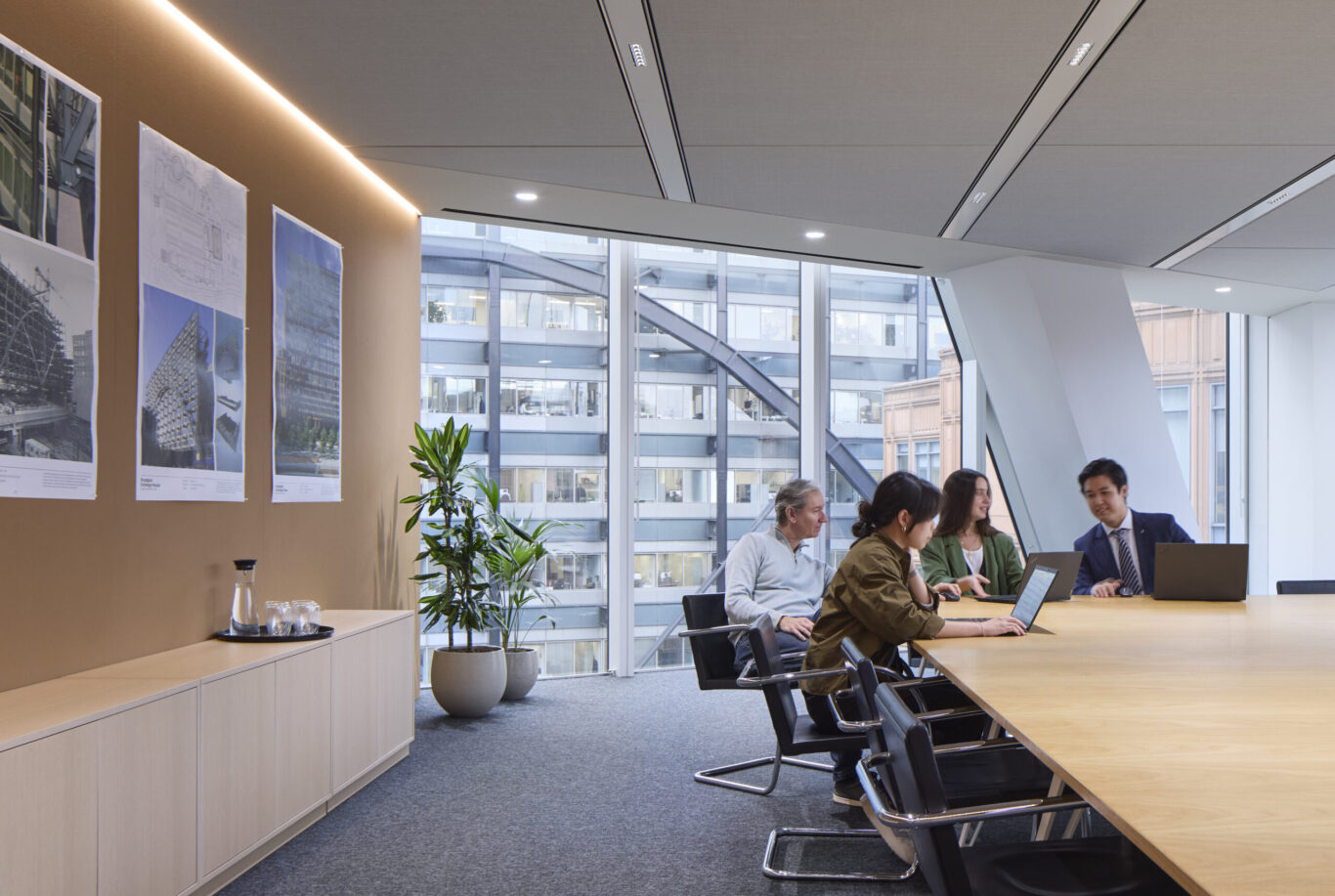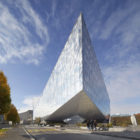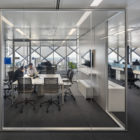Scaling up our workplace
SOM’s London office occupies a floor of the SOM-designed Broadgate Tower, the pinnacle of the Broadgate Estate on the easternmost edge of the City of London. Based in the building since 2014, our London studio moved to a new floor in 2024 to accommodate our growing team. The 1,200 square-meter fit-out is designed to foster collaboration, offering a variety of work settings while also demonstrating our commitment to sustainability.

By embracing a circular economy approach and applying our Whole Life Carbon Accounting methodology, the design team achieved a 28 percent reduction in embodied carbon emissions, while delivering 12 percent cost savings—proving that sustainability and economy can go hand in hand.




